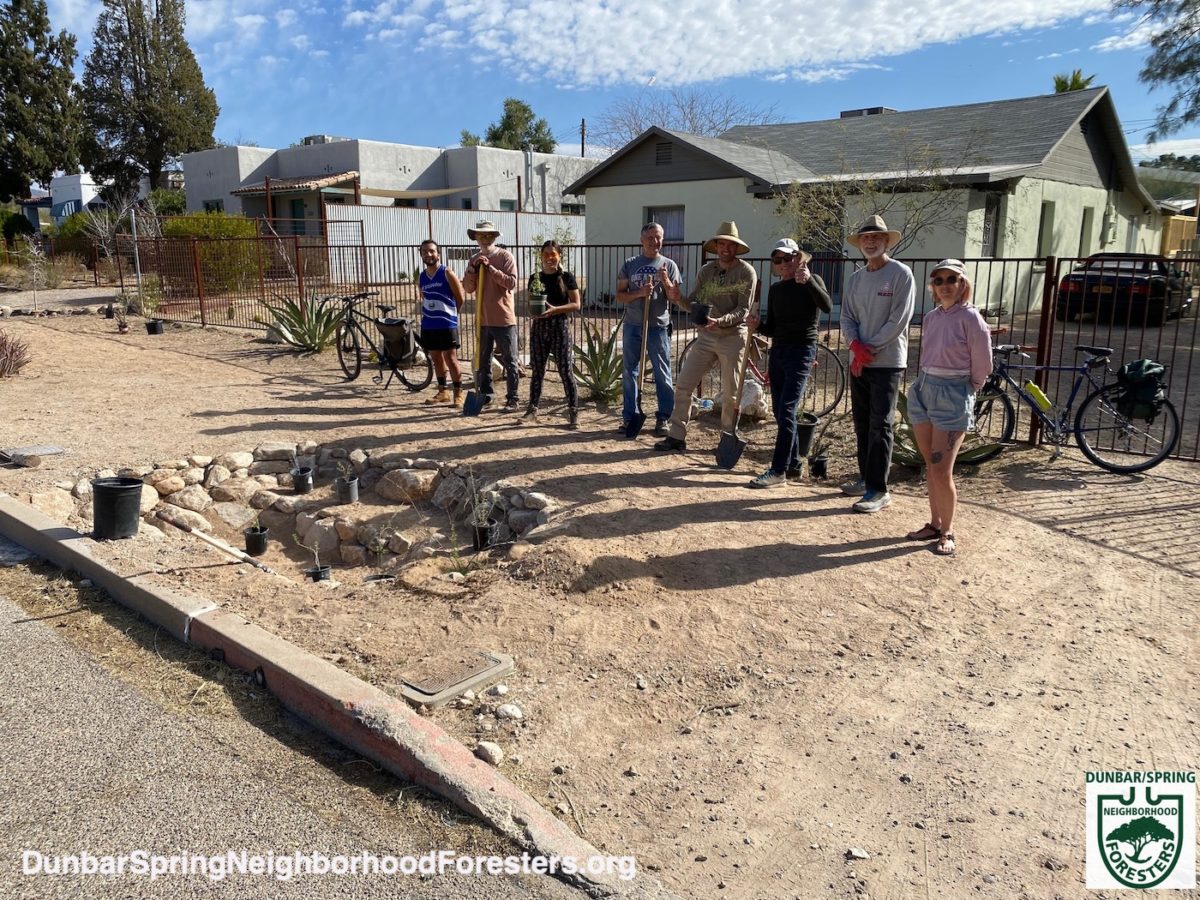Our 26th annual Dunbar/Spring Neighborhood Rain, Tree, & Food Forest Planting extended into the adjoining West University Neighborhood for a third year here in Tucson, Arizona.
But as both neighborhoods are part of/share the same watershed, you could say we planted in just one waterhood.
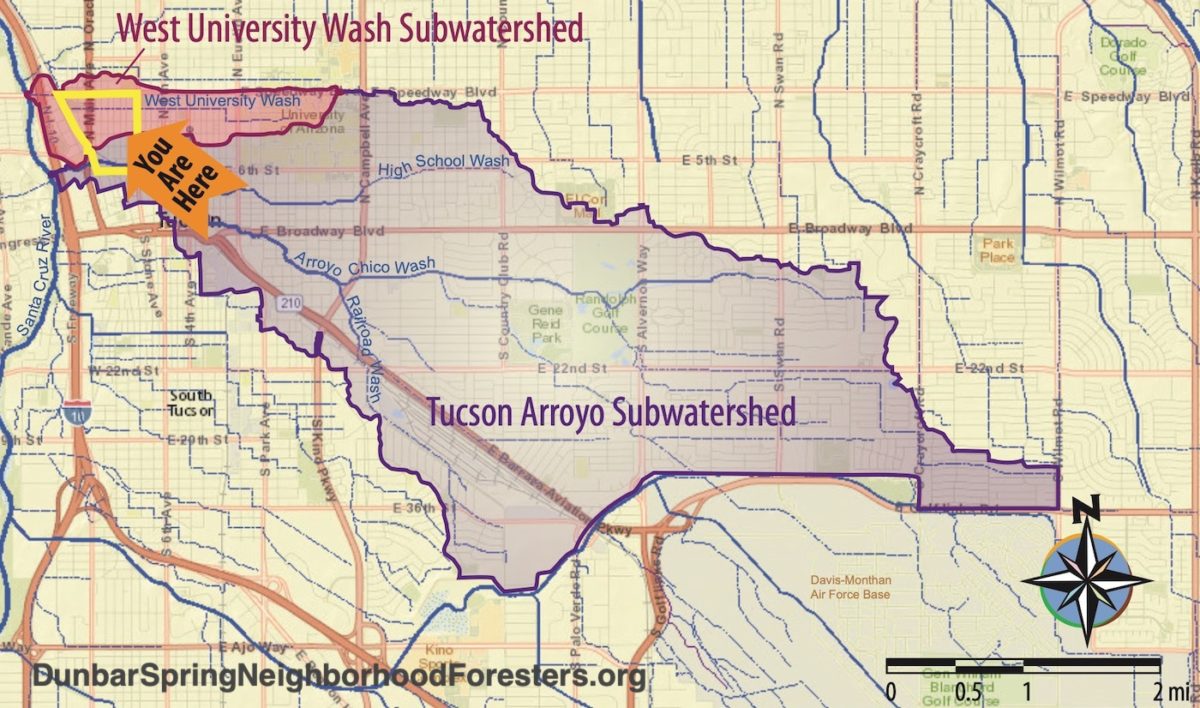
In total, during our 2022 planting, we planted:
• Over 30,000 gallons of stormwater (that will be captured in the constructed earthworks in an average year of rain) per year. (This water used to wastefully drain out of the neighborhoods, creating downstream flooding).
• 29 native trees that will grow to full size (some of these were planted within rain gardens created in previous years where trees were mistakenly removed by outside “maintenance” crews).
• 4 bush trees (see here for an example)
• 85 native, multi-use understory plants
• Quarter pound of Wildlands Restoration’s Short Stuff native wildflower, groundcover, and grass seed mix; and Bosque del Bac Restoration seed mix, along with neighborhood-grown coyote gourd seed and datura seed.
Volunteers who helped plant:
22
Neighborhoods represented by the volunteers that helped plant:
5
Neighborhood blocks of public pedestrian paths cleared of gravel/rock, pruned, widened to five feet, and built up with dirt excavated from basins to get public path level with top of street curb—to regain full pedestrian access:
3
Four-inch diameter curb cores made to direct street runoff into street-side basins:
9
Existing driveway dips in street curb used as street-side basin inlets:
1
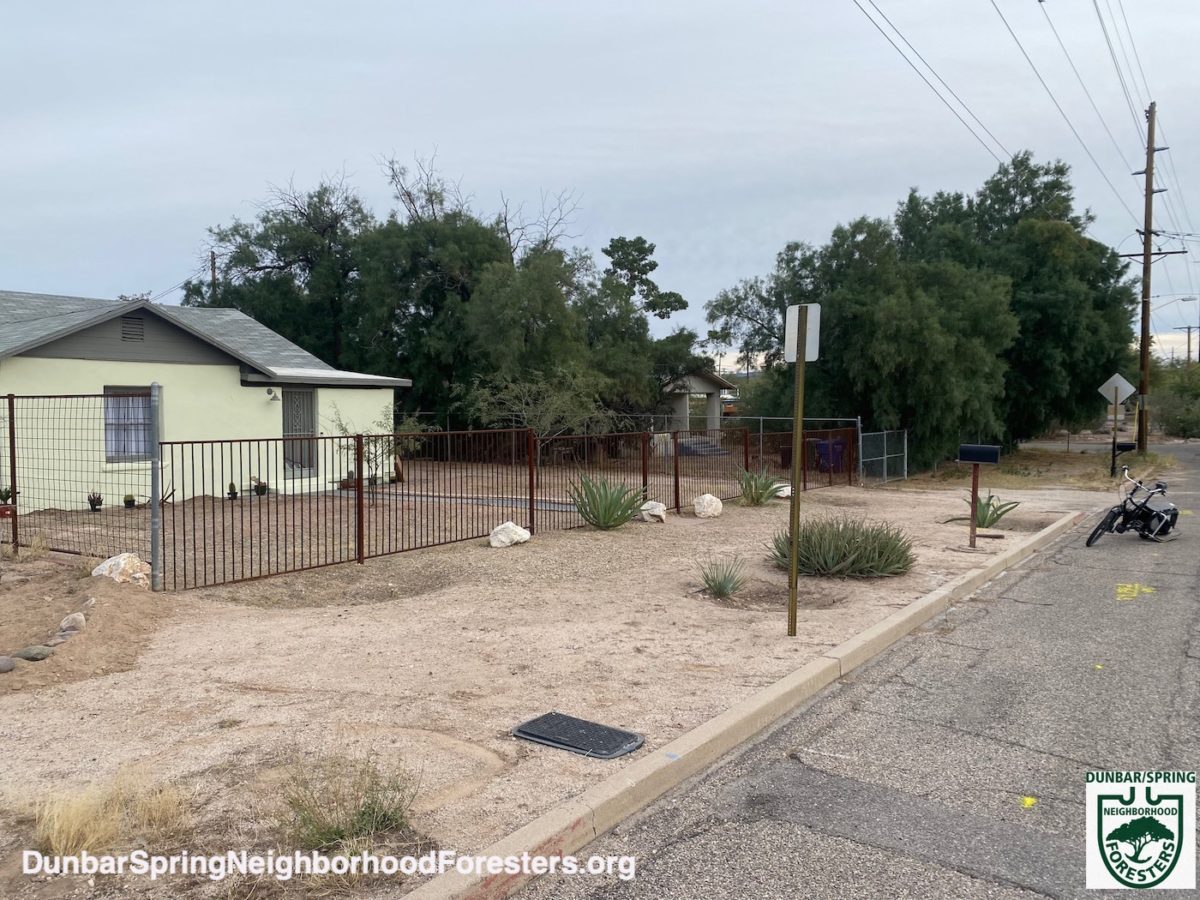
Photo: Brad Lancaster
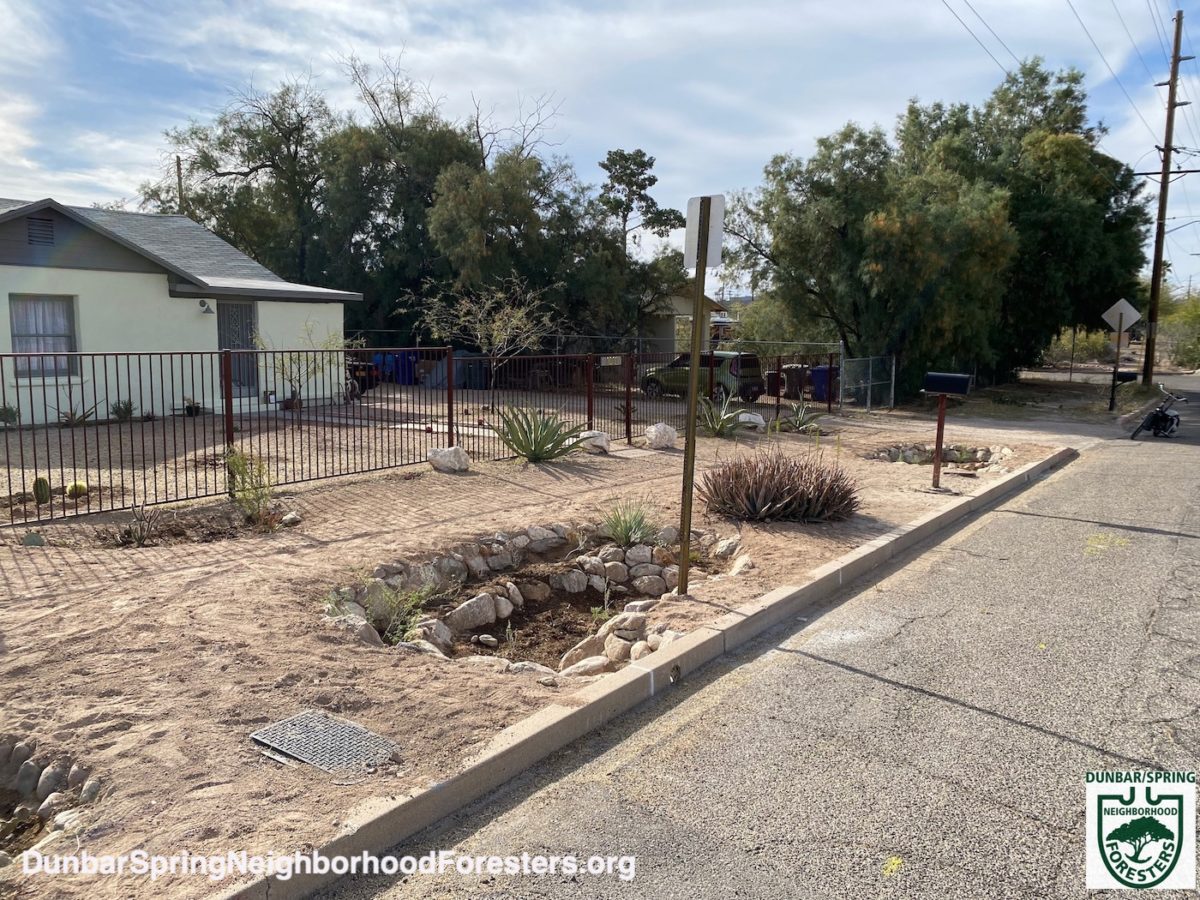
Photo: Brad Lancaster
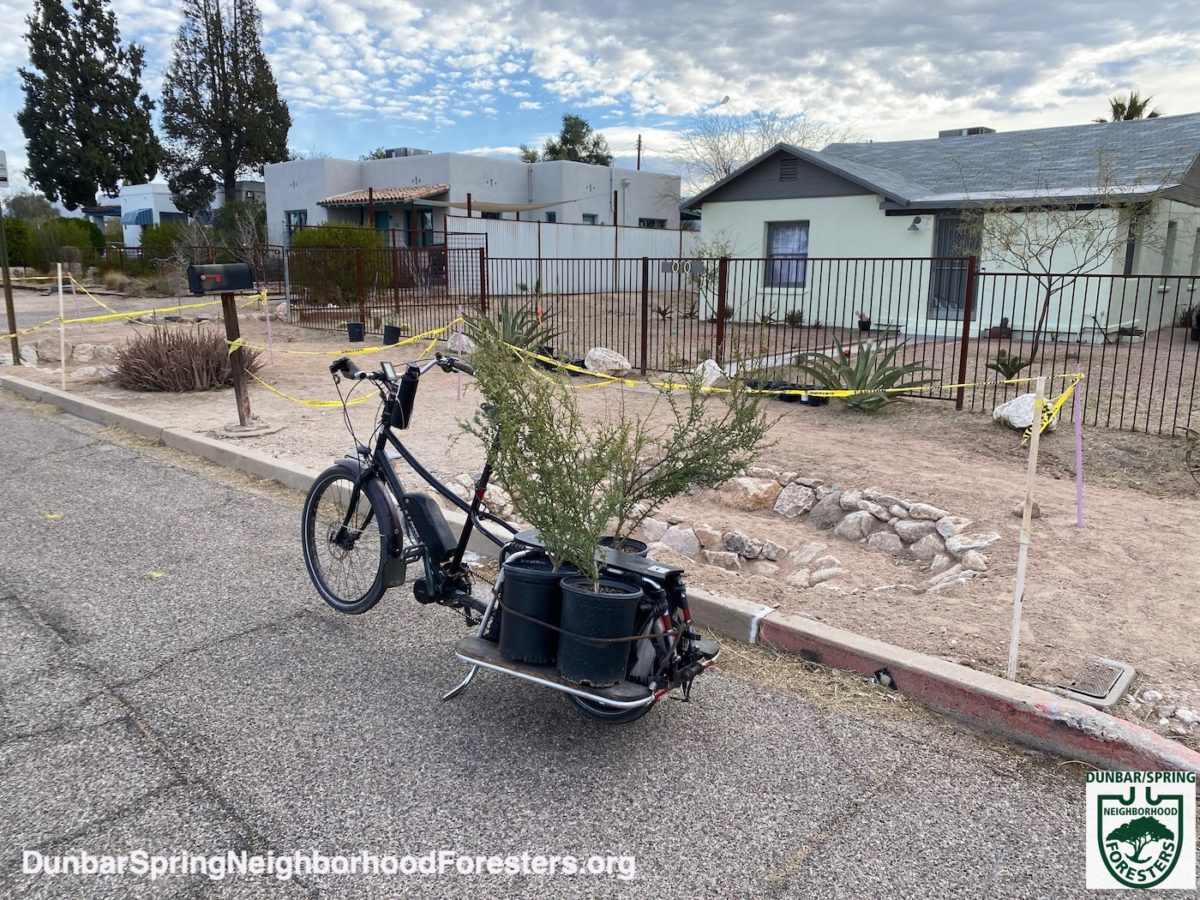
Photo: Brad Lancaster

We plant 5-gallon-sized trees and 1-gallon-sized understory plants because they are cheaper, and easier to plant, than larger sized plants; and within three to five years the smaller plants will catch up with and surpass the growth rate and size of larger-sized plants.
Photo: Brad Lancaster
Contractors we collaborated with to create the earthworks pre-planting, and the curb core holes post-planting:
• Little John Excavating
• Dryland Design
• Native Roots
• Tucson Concrete Cutting
Local plant nurseries from which we sourced the plant material:
• Desert Survivors Native Plant Nursery
• Nighthawk Natives Nursery
• Spadefoot Nursery
• Mesquite Valley Growers
• Wildlands Restoration
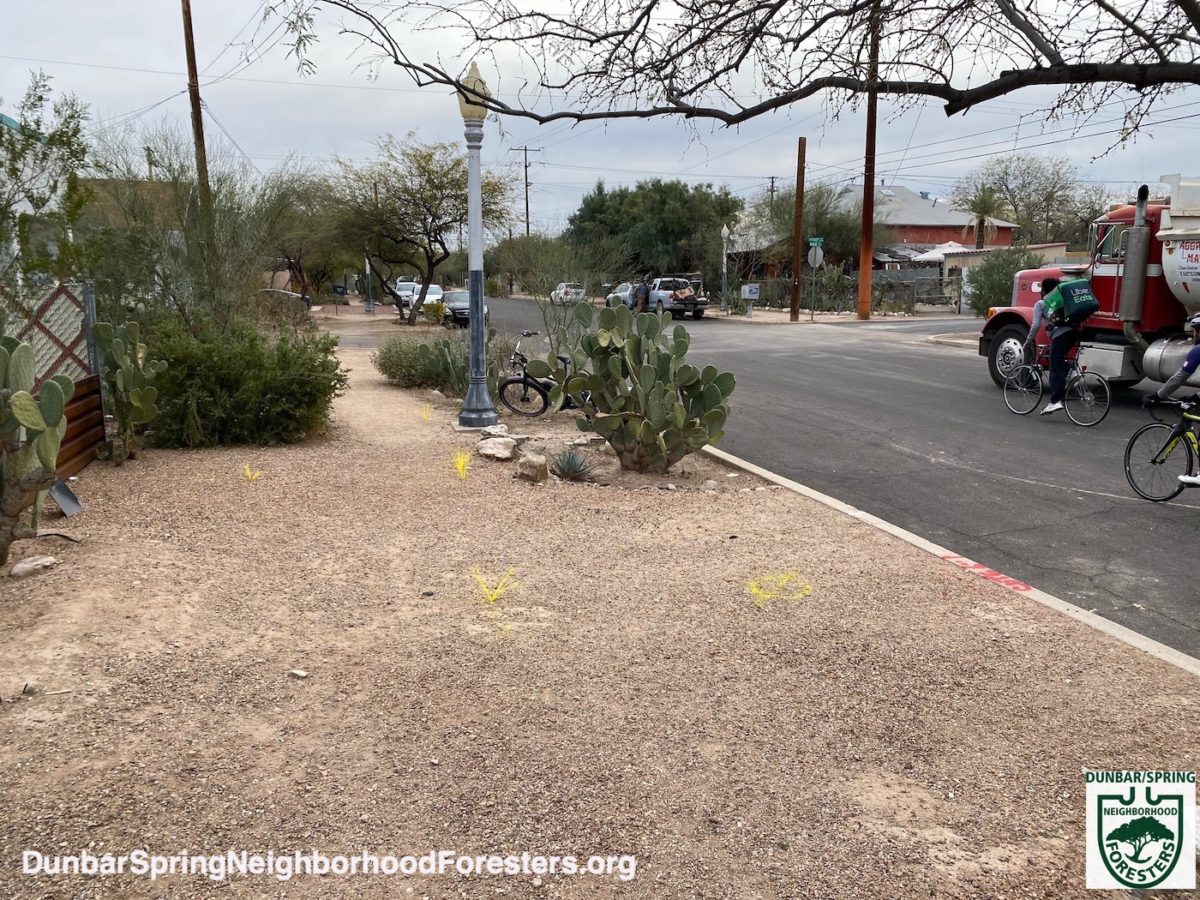
The gravel makes the pedestrian path LESS accessible because it is hard on the feet of small children and the elderly, while it also bogs down the small wheels of baby carriages, wheel chairs, and wheel barrows.
The nopal cactus and the agave were transplanted before the street-runoff-harvesting basin was dug.
Photo: Brad Lancaster

By removing the gravel, the pedestrian path becomes MORE accessible—especially for the feet of the elderly and small children and the small wheels of baby carriages, wheel chairs, and wheel barrows.
Photo: Brad Lancaster
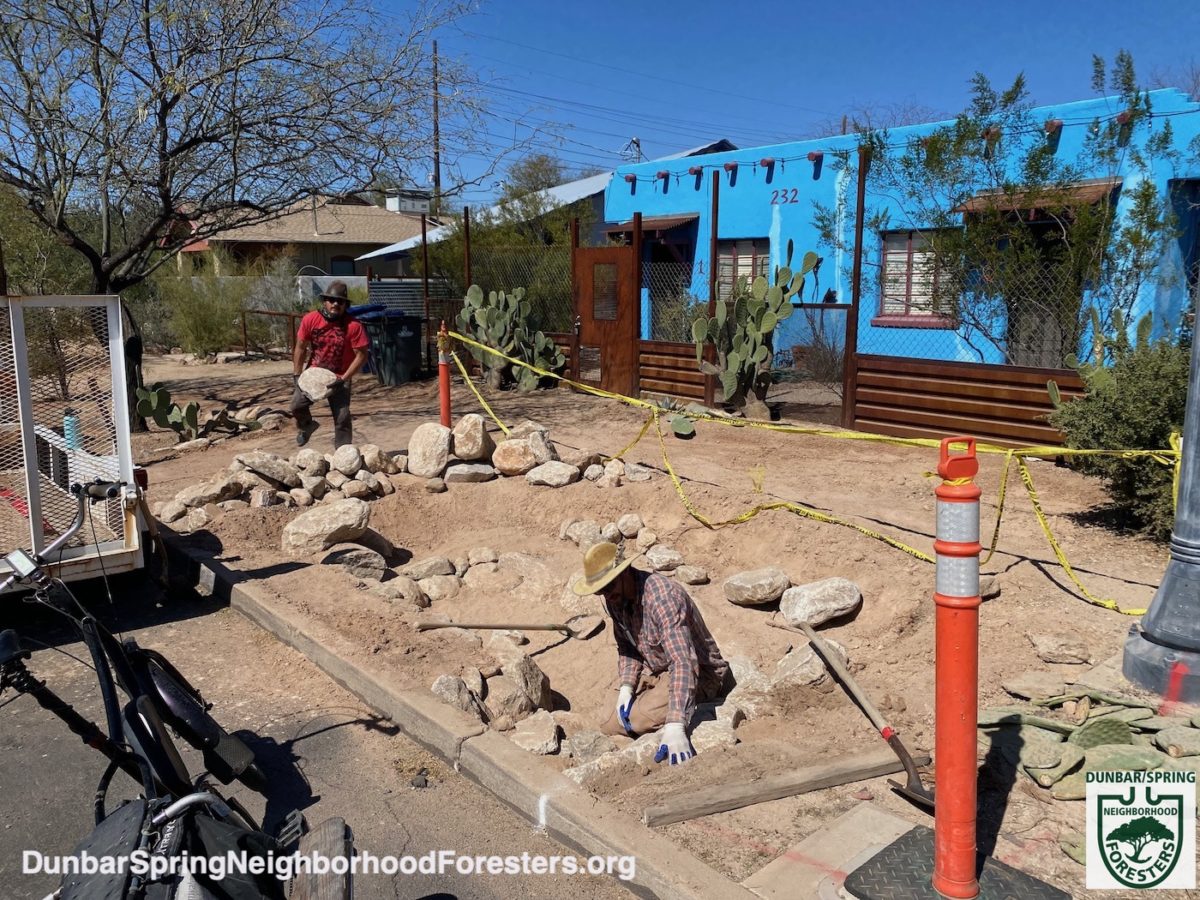
NO rock NOR gravel is placed at bottom of these eddy basins, because rock would negatively impede water infiltration.
Photo: Brad Lancaster

We use Catalina granite rock as it is a local rock you naturally find while hiking in the area (it is obtained when sites are cleared for building or roads).
We do NOT use subsurface mined or exploded rock, because we do not want to support such polluting and extractive industries (and such mined rock does not look natural).
Spread the word for next year
If you live within this waterhood share this with you neighbors, as we’ll be taking orders for the 2023 plantings in December 2022. Check our Events page and Blog later this year for updates. Or better yet, sign up on our Contact page.
And if you live in this or a different waterhood, consider starting up a neighborhood forester effort in your neighborhood.
Water harvesting books for more info:
And for the best guides on doing it yourself see the books
Rainwater Harvesting for Drylands and Beyond, Volume 1 and Volume 2

Photo: Brad Lancaster
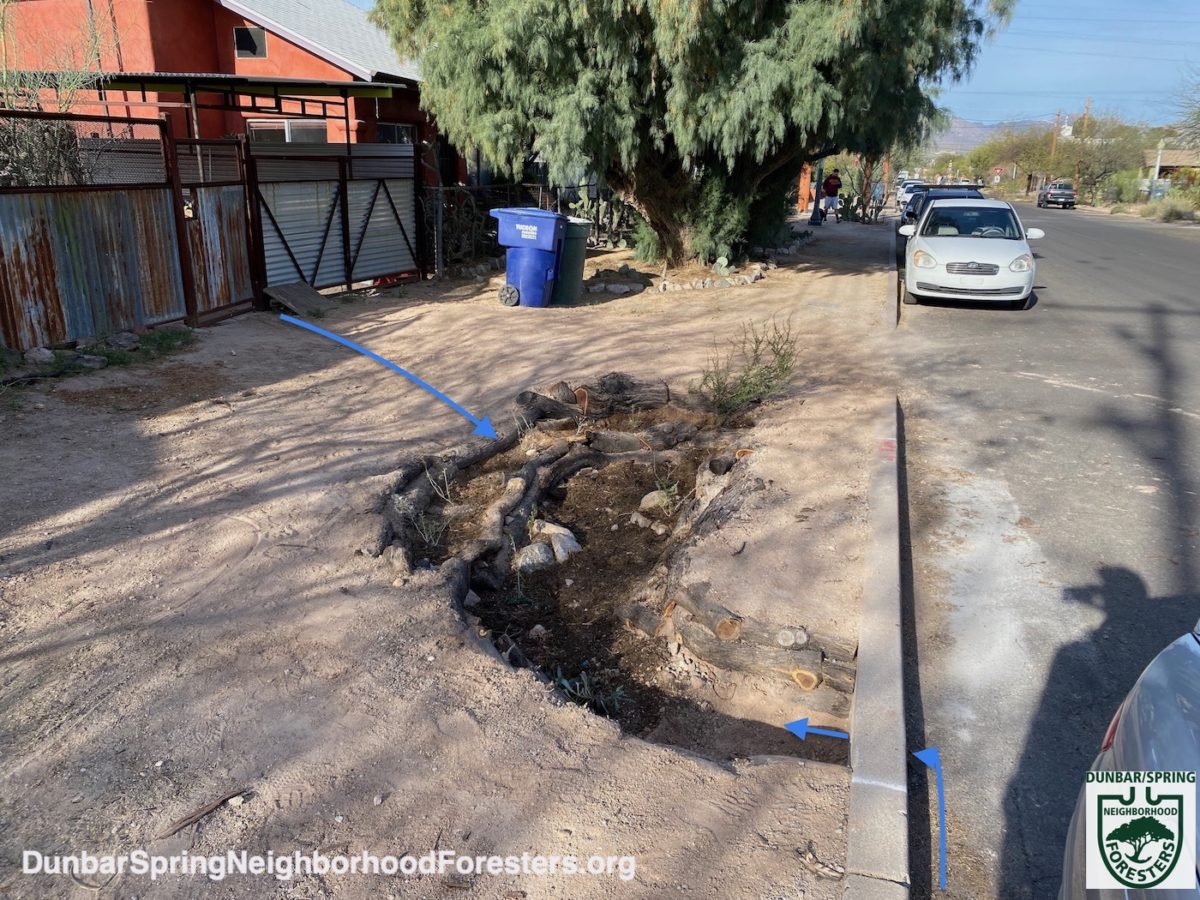
Blue arrows denote water flow. The basin will harvest street runoff AND runoff from yard to left, that used to erode the public pathways and driveway, but will now beneficially help grow plants thanks to a gradually-sloped rolling dip that redirects the flow.
See chapter 9 of the full-color Rainwater Harvesting for Drylands and Beyond, Volume 2, 2nd Edition for how to design and build rolling dips.
Photo: Brad Lancaster
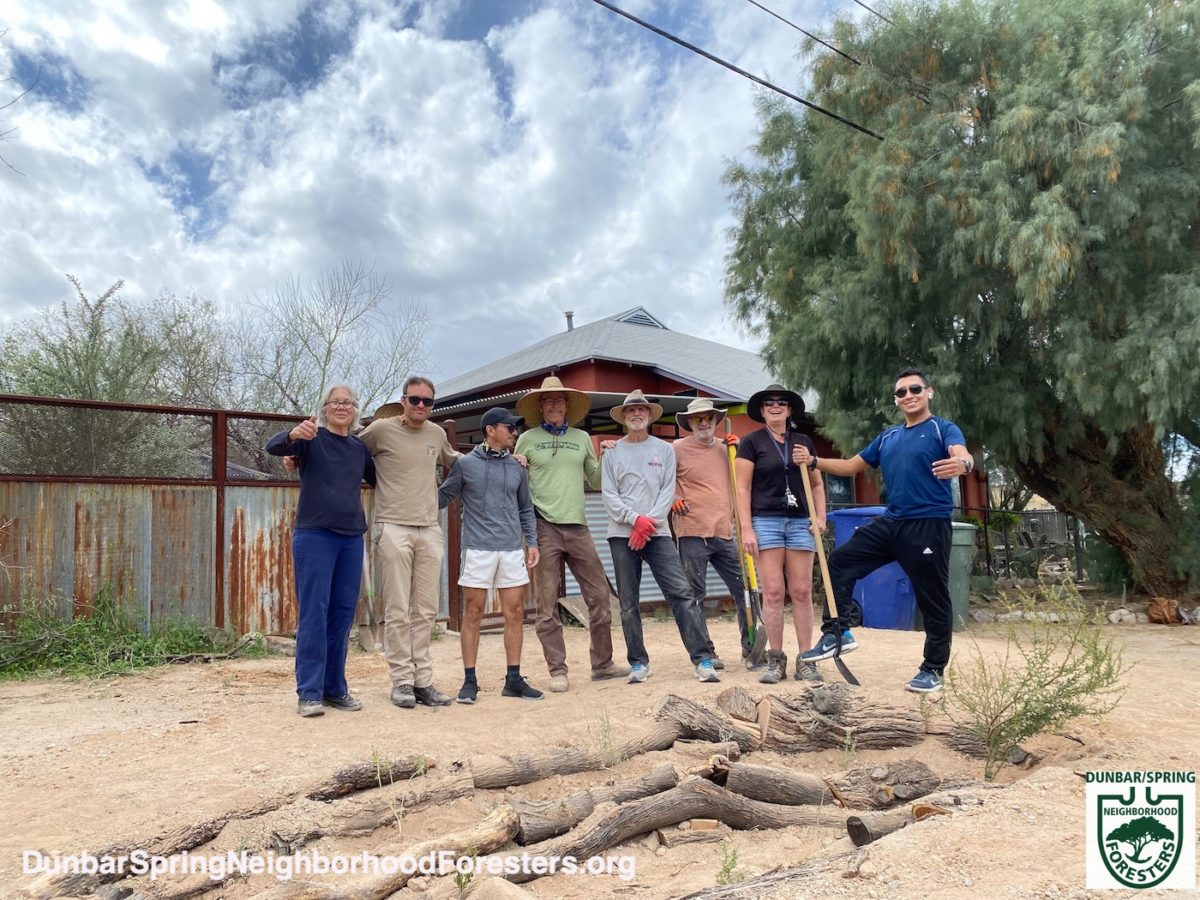
Photo: Maria Luisa Ruiz Luna

Photo: Brad Lancaster
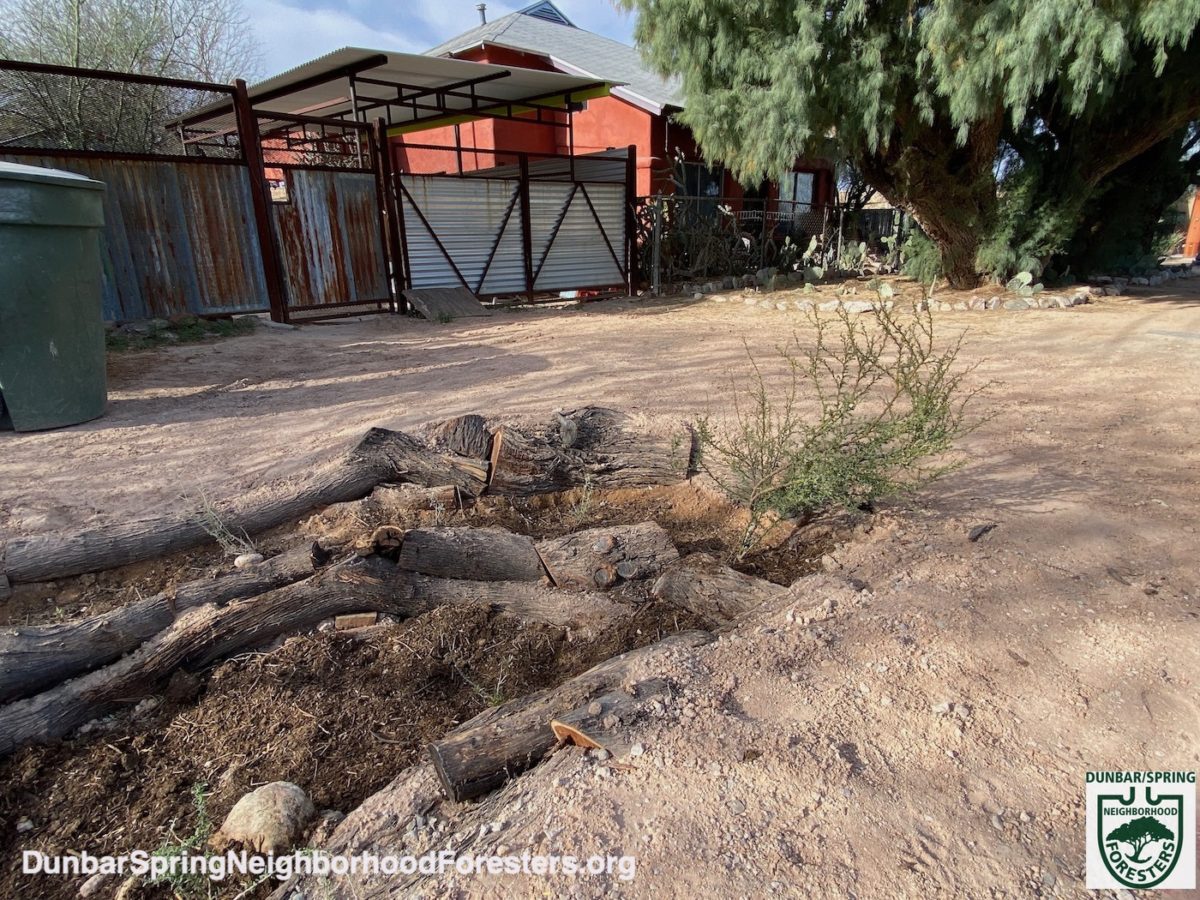
This way the well-placed logs hold soil in place, instead of the soil eroding between poorly-placed logs.
Photo: Brad Lancaster
Breakdown of the 2022 planting numbers by neighborhood:
Dunbar/Spring Neighborhood
Planted:
Over 25,000 gallons of stormwater per year
25 trees that will grow to full size
3 bush trees
70 understory plants
8 curb cores (plus, one driveway dip in curb was used instead of a curb core)
14 volunteers
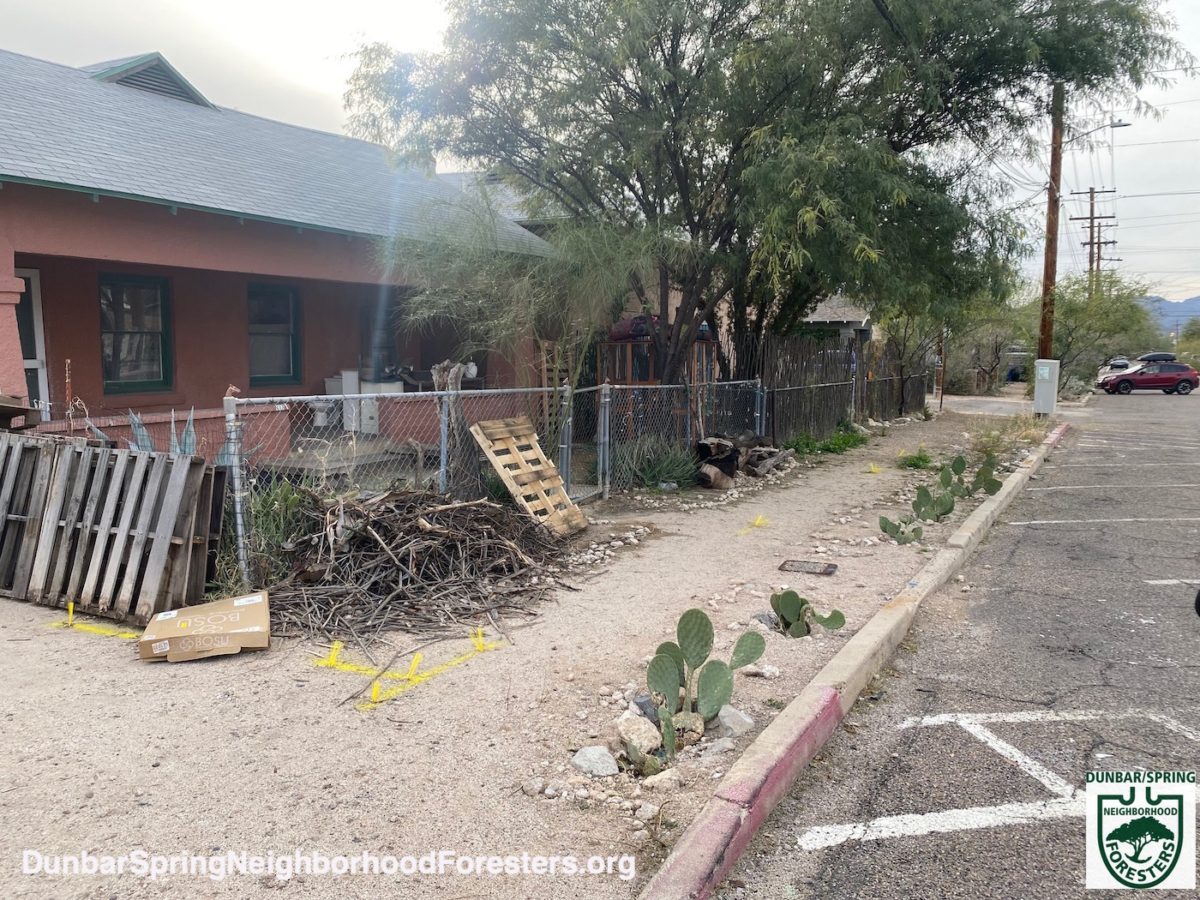
Photo: Brad Lancaster
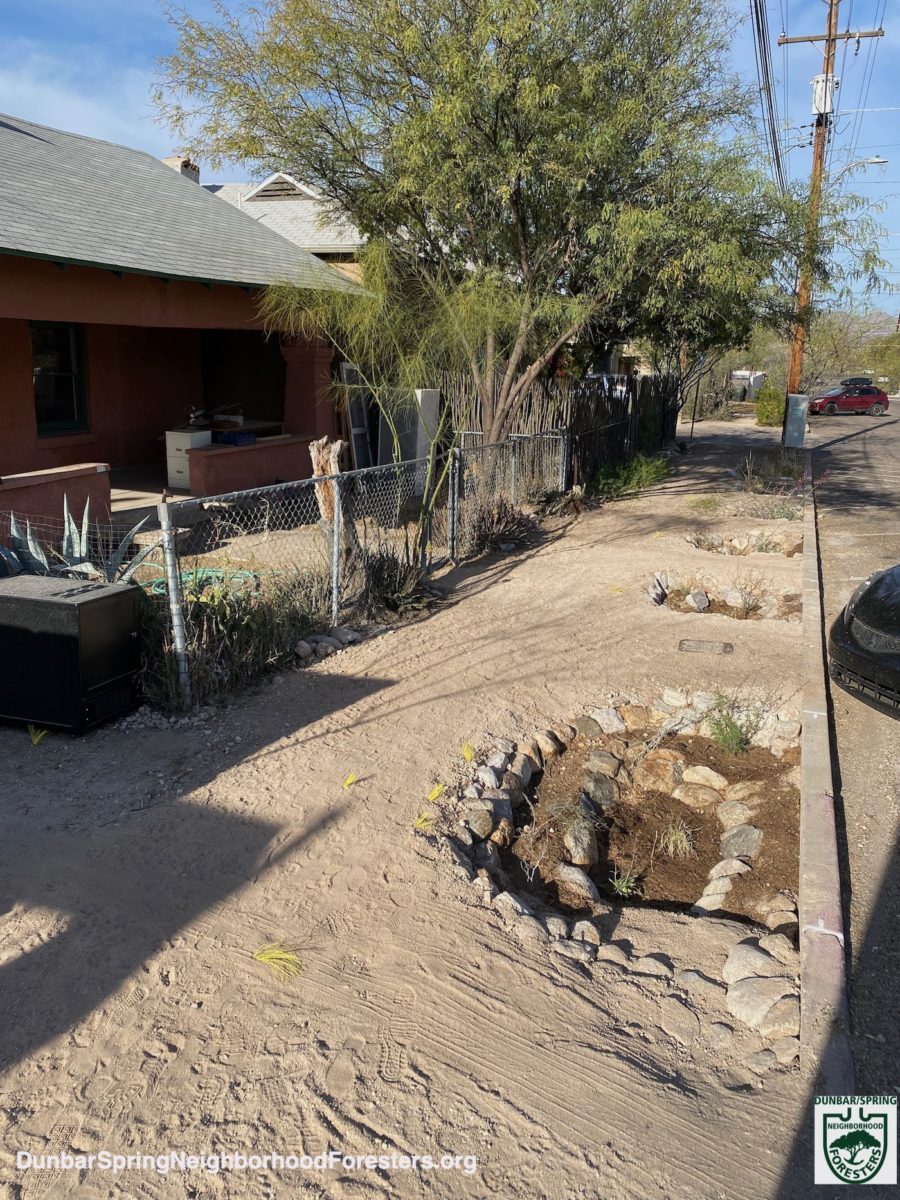
Note how the public pathway has been widened to 5-foot width so two people can comfortably walk side-by-side, while small rock and caliche that used to be a tripping hazard has also been removed.
The basin in the foreground receives street runoff via a driveway dip in the street curb, while the basins in the background receive runoff via curb core holes drilled in the curb.
Photo: Brad Lancaster
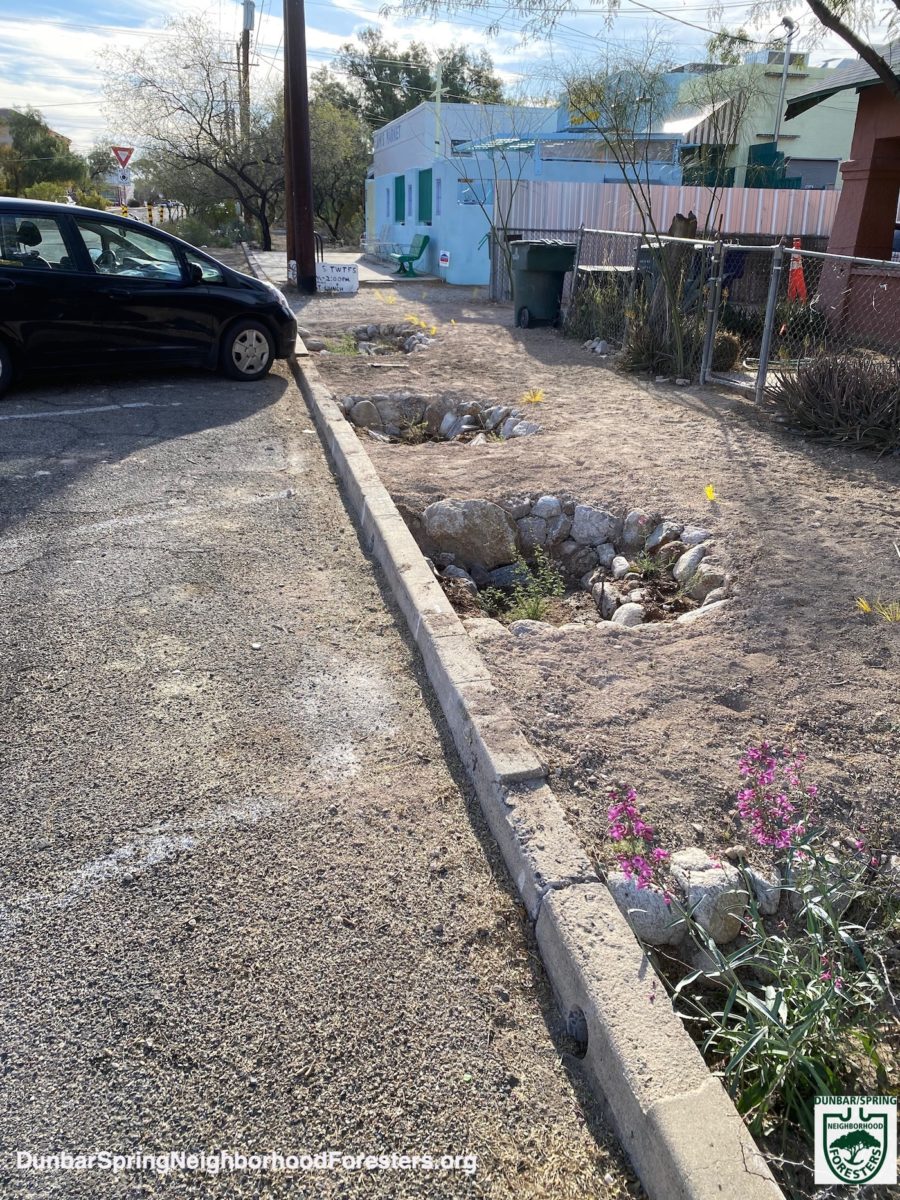
Photo: Brad Lancaster
West University Neighborhood
Planted:
Over 5,000 gallons of stormwater per year
4 trees that will grow to full size
1 bush tree
15 understory plants
1 curb core
8 volunteers

Yellow paint denotes approximate location of underground gas line. We call Bluestake at 811 before any work to mark underground utility lines. Bluestake markings is a free service.
Photo: Brad Lancaster
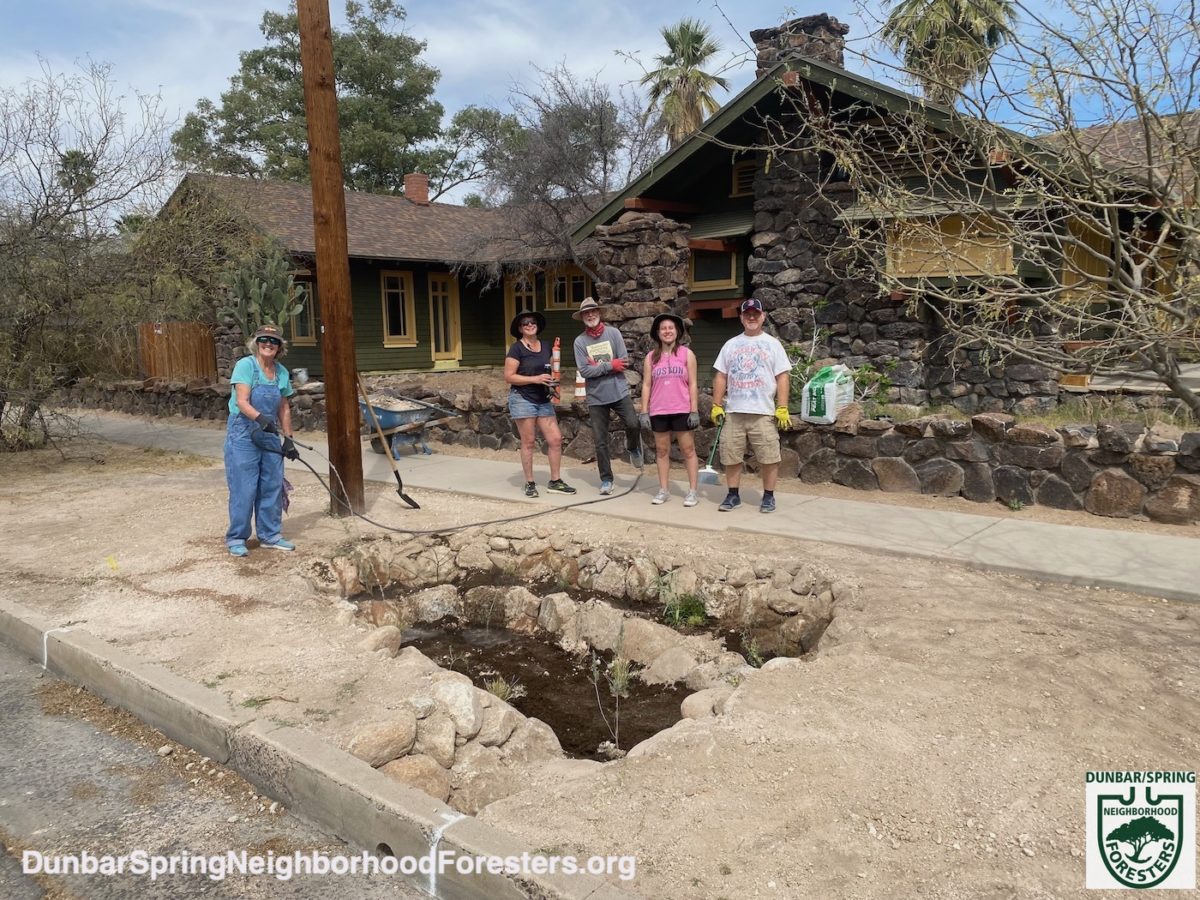
Photo: Brad Lancaster
Please consider making a donation to the Dunbar Spring Neighborhood Foresters
so we can continue and grow these efforts, share lessons learned, and provide the organizational tools we continue to evolve:

